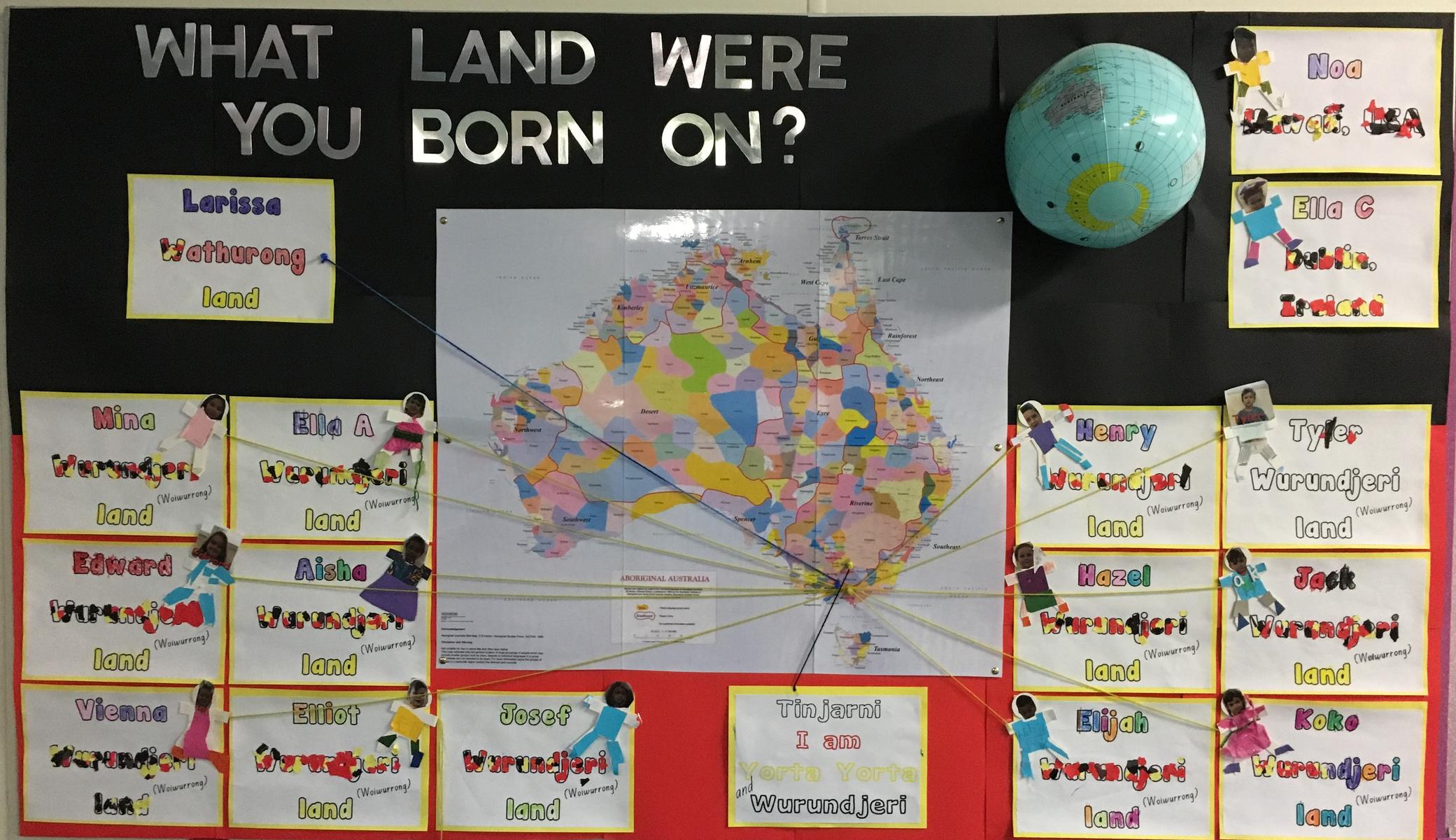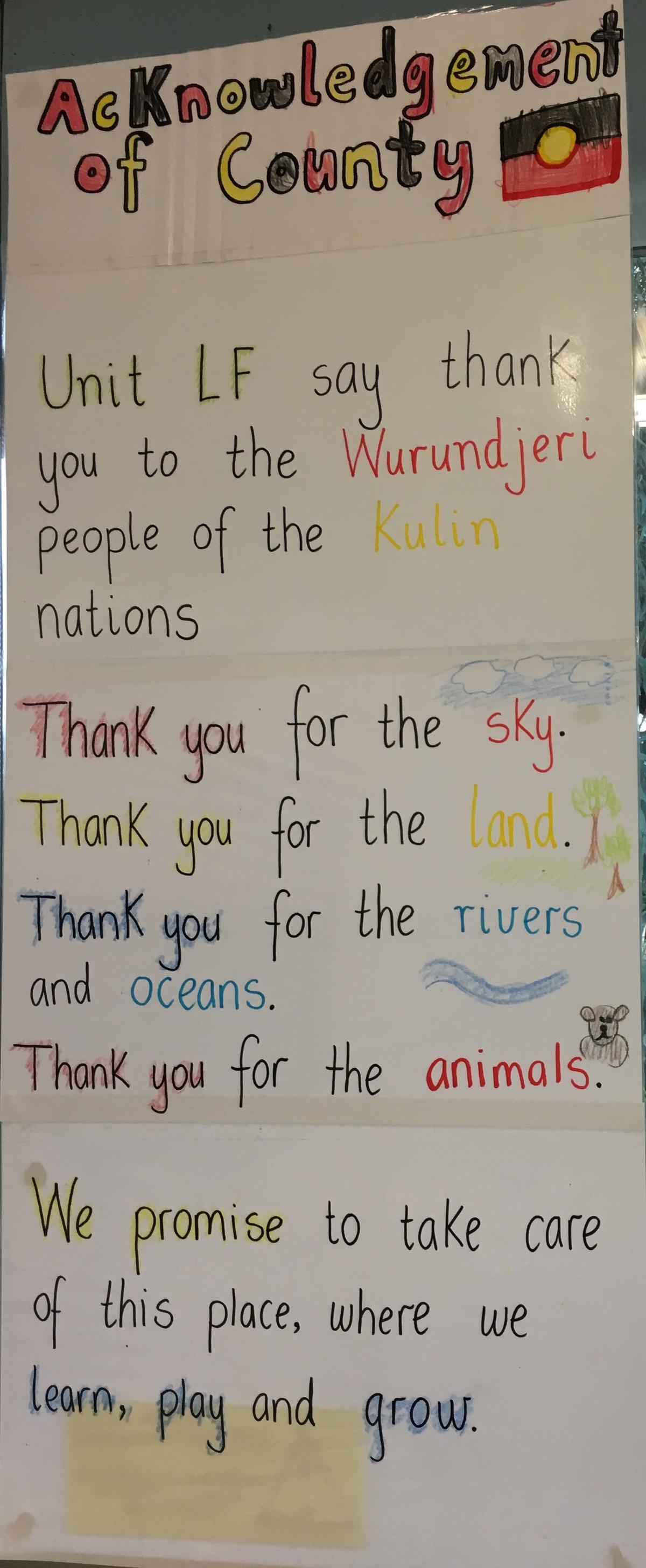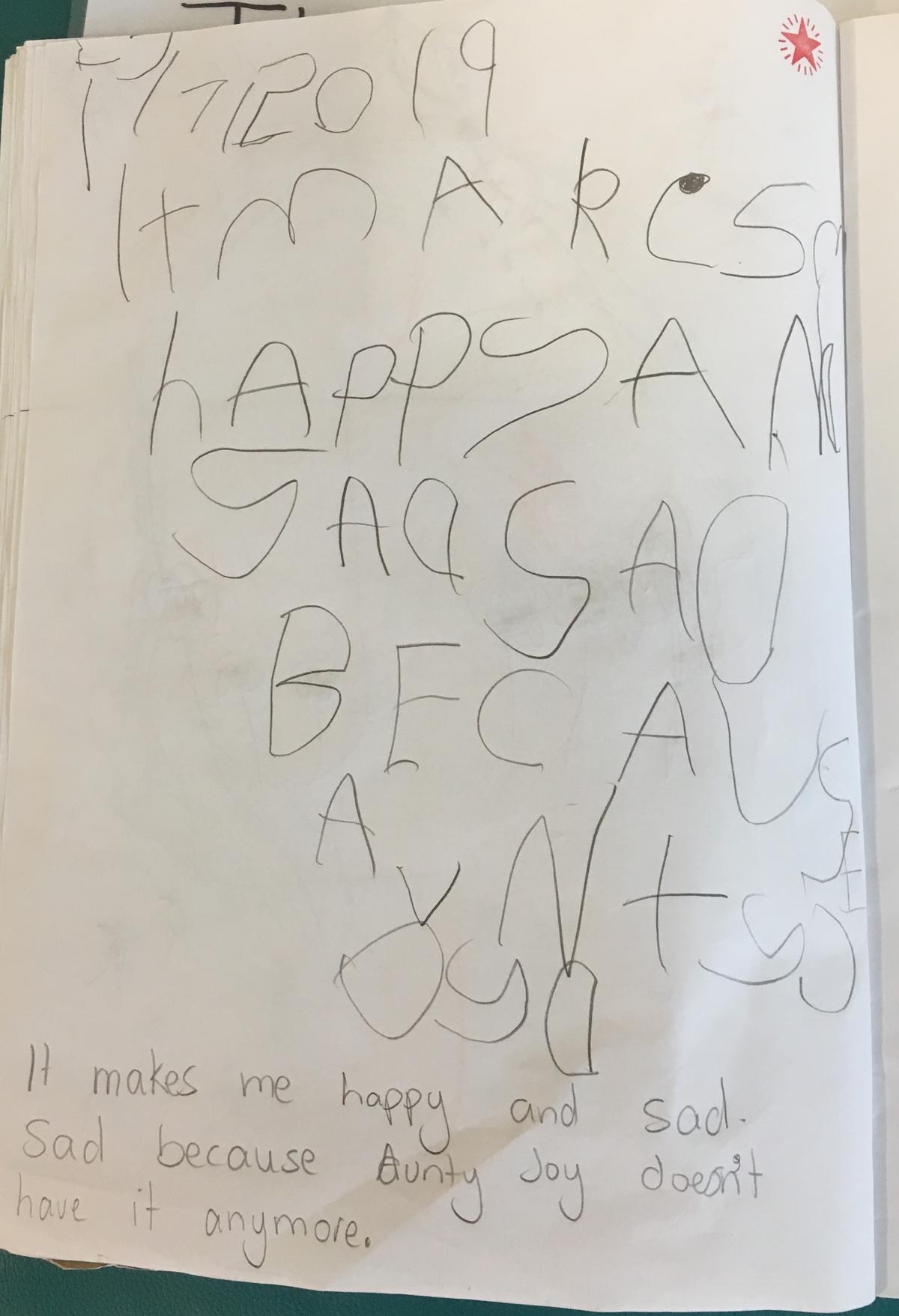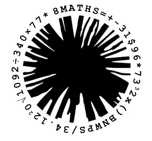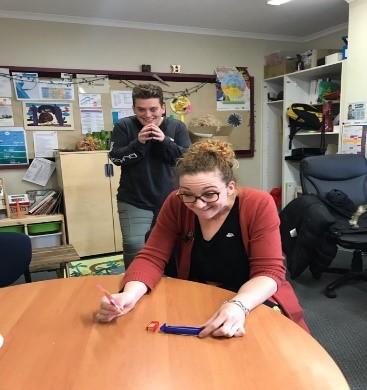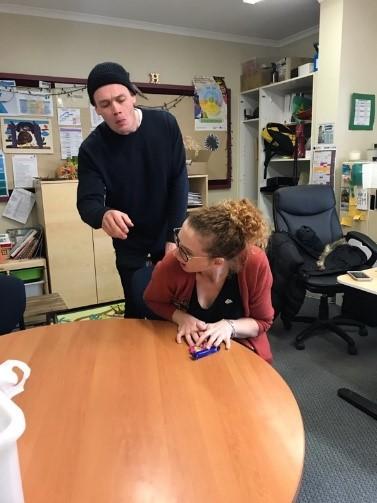school life
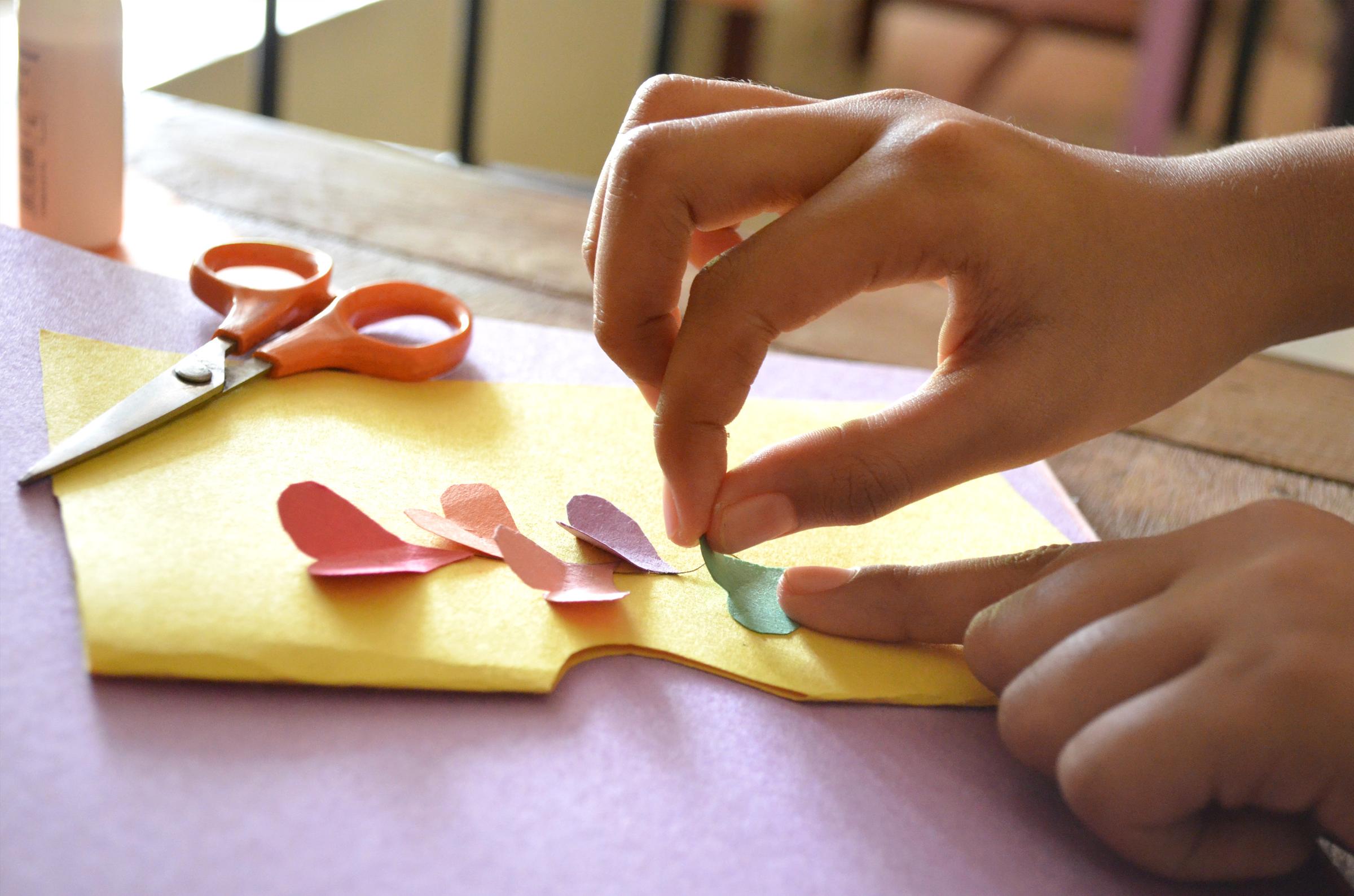
LF
This term in Unit LF, we have started to inquire into what makes a place special. We began by finding out where we were born and marked this on our map of Aboriginal lands.
As a part of our reading program this week, we have read and explored Welcome to Country by Aunty Joy Murphy and Lisa Kennedy.
As a response to this book, our class created our own Acknowledgement of Country that we now say every morning. While we were creating this together, one of the amazing people in Unit LF noticed that we don’t always look after our land, saying that there is often rubbish left in the playground. We took action right that minute and went for a quick clean-up of the yard.
We had a think about how it makes us feel that Aunty Jo has welcomed us to enjoy, play and learn on the traditional land of the Wurundjeri people. We were all very thankful, while some of us went a bit deeper and started to think about the impact on traditional owners.
maths
A maths lesson in unit ABAH
As the 1/2s settle into their spots, there is a H, T and O chart drawn on the board; it’s time for guess my number! Alice has written a secret 3 digit number on the board (it is lower than 300 because there isn’t enough room to stick more than 3 hundreds blocks on the whiteboard!) for the class to guess. She also shares that she will be using MAB to model the numbers the students are saying. When a student says a guess, they are encouraged to say what it is using place value language, for example 234 would turn into 2 hundreds, 3 tens and 2 ones to show what the number is made up of. The game finishes when CC guesses the right number, 2 hundreds, 8 tens and 2 ones.
The lesson the starts off with a story which the class loves (this one was a particular favourite!).
“So ABAH, I have a story to tell you”, Alice says to hook the students in, “it’s a bit of a sad story, something happened to Hannah and her chocolates”. As soon as Hannah is mentioned, Alice sees ears prick up, she’s got their attention! The slide flashes on the screen:
Hannah was so excited to bring in some lollies at school. While Hannah was looking at them, Faith came up and stole some!! Now Hannah only has 13 lollies. How many might Hannah have started with and how many did Faith steal?
_ - _ = 13
There are lots of murmurs of excitement and disbelief and giggles. There are also a lot of “poor Hannah!” and “Silly Faith!” The problem is then broken down so students are clear on what Alice is looking for. She then flips to the next slide. “This is the question that you can start with if you’re not feeling confident to try the initial question” Alice explains.
Imagine Hannah started with 10 lollies. Faith stole some from her. How many might Faith have taken and how many will she have left?
10 - _ = _
This is the enabling prompt. It is similar to the initial question but with more information, and gives students an ‘in’ to get them started. It also looks the same as the initial question, which immediately takes away the ‘I’m doing something different’ element that can then spiral into negative self-talk such as: “I’m doing the dumb/easy/lower/simple maths”
RMR then asks what the butterfly question is. This is the extension prompt and adds another element to the question. It can also require the students to extend their thinking or explain it. Sometimes it’s not about going up it’s about going out.
The butterfly question is then put up on the screen.
The next day, Hannah brought in more lollies. This time, Michael took some from her! (Hannah was very sad!)
She now has 20 lollies left. How many did she bring in and how many did Michael take?
_ - _ = 20
This question is similar but different. It is still set up the same with the same context but it allows students to extend themselves. They could write 40 – 20 = 20 but they could also try 3 digit numbers or even 4 digit numbers! Alice encourages students to challenge themselves and to try some harder numbers, “what is the trickiest sum you could write that equalled 20?” she challenges.
During the middle of the session, she stops the class to ask them for some sums they have written. This check in phase helps her to see who is on the right track and who might need some extra support. This is where she can do some targeted teaching, because she can see where students might have gotten confused or might need additional extending. After a check in, students continue to work away at the chocolate problem, moving through the questions. Students can start at the chrysalis question (this is the initial question), then move to the butterfly question (this is the extending question) or they can start at the caterpillar (the enabling prompt) to get them started then move to the chrysalis question and then to the butterfly.
At the end of the lesson, the class comes to the floor with their books ready to share. Alice pulls out a photo and that is the person who shares their thinking. She puts the next slide on the screen. These are some question prompts for the person sharing.
Explain the strategy you were using
Why do you think it was the best strategy to use?
Would you try anything differently next time?
These questions allow students to explain their thinking and the strategies they used to help them solve the problem. Alice can then make a note of what they are using and where to go next with her teaching.
Maths books are then put away and more calming music gets played to help with the transition from maths to the next subject, after all ABAH work hard in maths!
This is a typical maths lesson in ABAH, with a warm up game, a story involving one of the teachers and enabling and extending prompts. The teaching is in the middle of the lesson and is targeted to the student’s needs, instead of making assumptions about what the students might need to be taught. It allows students to choose where they need to start which immediately gives them ownership of their learning. The students who need extending are able to not only challenge themselves (again building the ownership of their learning) but are able to develop their reasoning and critical thinking skills. The share time at the end not only allows students to practise their reasoning skills, it also can expose students to different strategies they could try.
If you would like to know more about lesson structure and enabling and extending prompts, we will be running another maths info night focusing on this in the near future.
Also, follow us on Twitter @BnwpsM to see the awesome numeracy lessons BNW teachers teach!
Have a wonderful weekend,
Jessie and Alice

